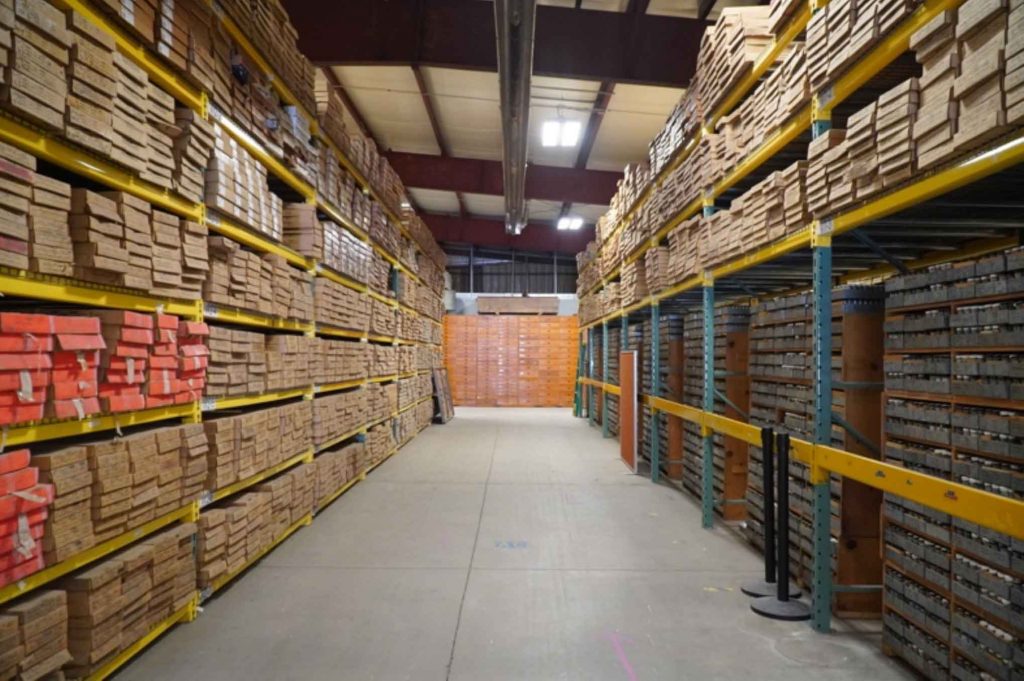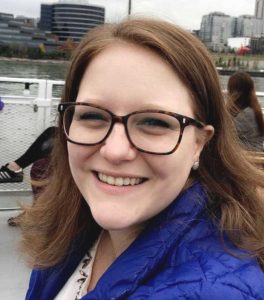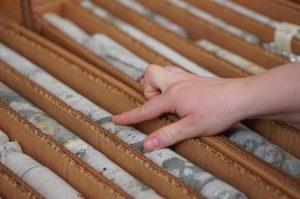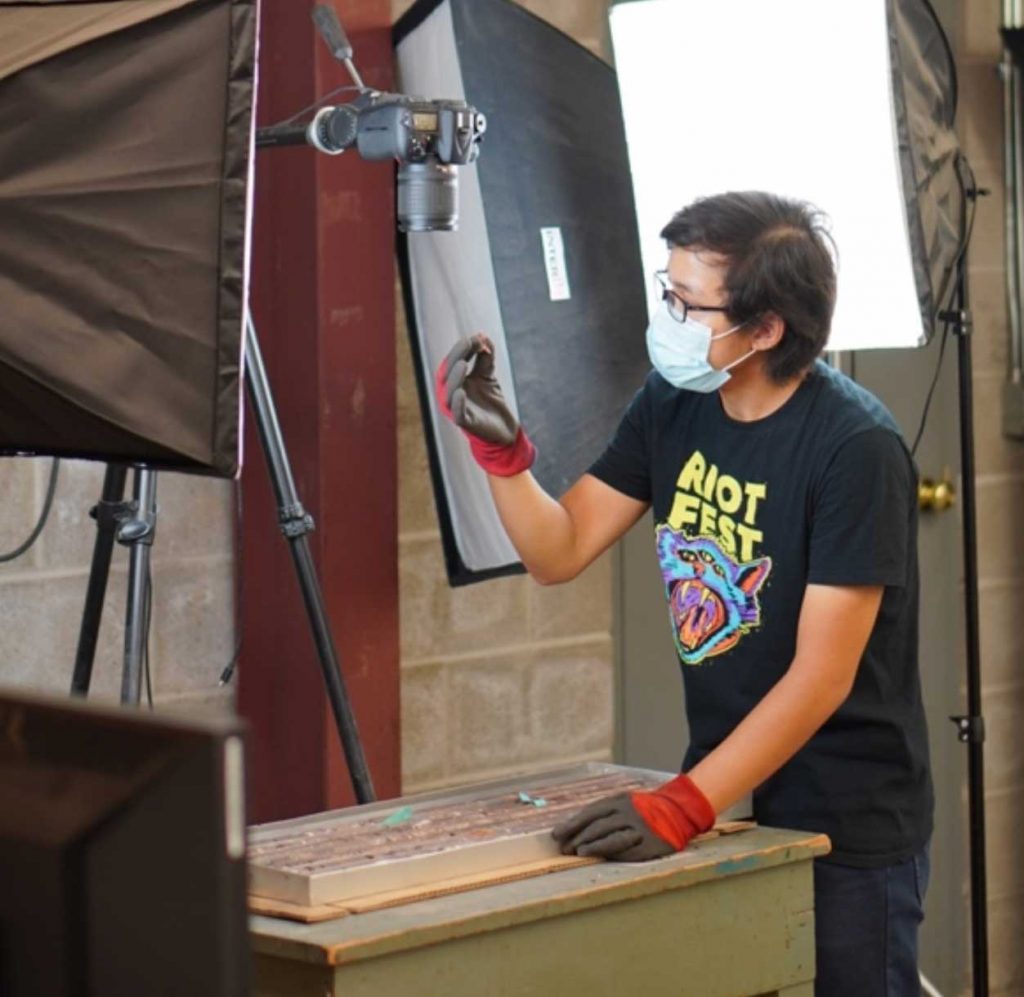What can you learn from a pile of rocks?
Quite a bit, if you visit the core repository.
Officially known as the Wisconsin Geological and Natural History Survey (WGNHS) Research Collections and Education Center, the core repository is a research facility located in Mount Horeb that houses rock samples from across Wisconsin: 11,335 sets of water well cuttings, 15,000 hand samples, and 57,000 boxes of core.
Carsyn Ames, the samples coordinator who curates, organizes, and tends to the collections, succinctly explains its purpose. “You can think of it as the geologic library for the state of Wisconsin.”
Digging for answers
Although visiting researchers can’t check out the rock samples like books, they can examine samples at viewing tables within the repository. Ames says many of their patrons are scientists, university professors, and to a lesser extent, industry professionals seeking to learn more about what’s beneath their feet, like groundwater.
Carol McCartney is the recently retired outreach manager and gave tours at the core repository. She points to an example in Lake Geneva where a former WGNHS scientist, Madeline Gotkowitz, examined water well cuttings to help a local school identify the source of arsenic in their drinking water. Gotkowitz’s research helped determine a safer depth at which to drill a new well.
Geologists also use core to create maps of what we can’t see, like bedrock. These samples offer snapshots of the rock hundreds of feet beneath the ground, or in some cases, what rock used to be there.
“A lot of these cores were collected in places that don’t exist anymore.” McCartney offers the Flambeau mine near Ladysmith as an example. The mine operated in the early 1990s, but has since been backfilled and reclaimed. What rock was there is no longer—unless you visit the repository, which has pre-mine core from the site.
Samples such as the Flambeau core underscore the importance of the repository. It preserves pieces of Wisconsin’s geological history, even in places where that history has been mined away. As Ames puts it, “It’s an invaluable amount of knowledge.”
Examining the past into the future
Like many in-person activities and events, tours and research trips to the core repository have been cancelled during the pandemic. Without these visits, Ames saw an opportunity to begin a new project: building an online database of digital images. Currently, about 10% of core is photographed, and the photos aren’t publicly available. Fully digitizing the collection would allow researchers to search for and view samples from afar—a good thing even in non-pandemic times.
Ames has big plans for the new photography setup, one that involves wheels. “I want to make my core photography station mobile.” The current arrangement is ten years old and requires Ames to lug boxes of core from shelf to camera. With 57,000 boxes of core, that’s a lot of lugging. Did I mention some shelves are 25 feet high?
Once complete, the database will make the core repository’s collections accessible to professional geologists and rock aficionados across the state. If you have questions about what’s beneath your feet, you won’t have to travel far to investigate.
Although the core repository is closed for public tours, you can take a virtual tour here.










